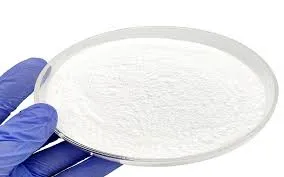Understanding RO Water Plant Chemicals Essential Components for Purification
Reverse Osmosis (RO) water plants have become increasingly vital in our quest for clean and safe drinking water. Utilizing advanced filtration technology, these plants efficiently remove impurities, salts, and contaminants, producing high-quality water suitable for various applications. However, the effectiveness of RO systems largely depends on the chemicals used during the water purification process. This article explores the essential chemicals involved in RO water plants and their roles in ensuring optimal operation and water quality.
1. Antiscalants
One of the primary challenges faced in RO systems is scaling, which occurs when dissolved minerals precipitate and form deposits on the membrane's surface. This scaling can significantly reduce the efficiency and lifespan of the RO membranes. Antiscalants are chemicals specifically designed to prevent the formation of these scale deposits. They work by sequestering the minerals in water, keeping them soluble and preventing their crystallization. By incorporating antiscalants into the pre-treatment process, RO plants can enhance membrane performance and reduce maintenance costs.
Before the water reaches the RO membranes, it often undergoes a pre-treatment process to remove larger particles and turbidity. Coagulants and flocculants play a crucial role in this stage. Coagulants, such as aluminum sulfate or ferric chloride, are added to destabilize colloidal particles, allowing them to aggregate. Once these particles clump together, flocculants help form larger flocs, which can be easily removed through sedimentation or filtration. This pre-treatment step is vital to ensure that the RO membranes do not become clogged with suspended solids, thereby maintaining their efficiency.
3. pH Adjusters
ro water plant chemicals

The pH level of the feed water can significantly affect the performance of RO membranes and the overall purification process. Some membranes may be sensitive to extreme pH levels, which can lead to degradation or loss of selective permeability. pH adjusters, such as sulfuric acid or sodium hydroxide, are used to optimize the water's acidity or alkalinity before it enters the RO system. By maintaining an optimal pH range, these chemicals help preserve membrane integrity and enhance the rejection rates of contaminants.
4. Biocides
Microbial growth is another concern for RO water plants, as biofilms can form on membrane surfaces, leading to fouling and reduced performance. Biocides, such as chlorine or quaternary ammonium compounds, are employed to control bacterial growth in the feed water. Regular application of biocides helps to maintain a clean and hygienic environment within the RO system, ensuring consistent water quality and operational reliability.
5. Cleaning Chemicals
Even with preventive measures in place, RO membranes will eventually require cleaning due to fouling and scaling. Specialized cleaning chemicals, including citric acid and sodium hydroxide, are used to restore membrane performance. These cleaning agents effectively dissolve mineral deposits and organic matter build-up, prolonging the lifespan of the membranes and improving the system's overall efficiency.
Conclusion
In summary, chemicals play a crucial role in the functioning of RO water plants, enhancing the efficiency and effectiveness of the water purification process. From antiscalants and coagulants to biocides and cleaning agents, these substances ensure that RO systems operate at their best while providing safe drinking water. As the demand for pure water continues to rise, ongoing advancements in chemical formulations will further improve the performance and sustainability of RO water plants. Understanding and properly managing these chemicals are essential for the success of any water purification operation.

